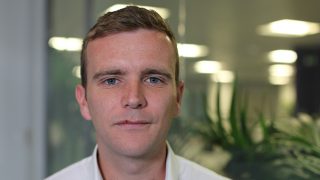UNISON, the UK’s largest health union, is challenging the government over its refusal to implement what is potentially the most effective recommendation in the Francis Report – the introduction of minimum staff to patient ratios.
This life-saving initiative would dramatically change life on the wards for patients and staff, providing a safer, more caring environment for all.
The call is backed by a new survey from the union of more than 1,500 nurses, midwives and healthcare assistants, which shows that 45% of respondents are looking after eight or more patients on their shift. Research shows that looking after this number increases the risk of patient harm.
The survey, taken on a typical day in the life of the NHS, 5 March, reveals staff under severe strain, reflected in one chilling comment from a nurse: “My ward will end up killing someone. That’s how bad it is and how unsafe.”
In the most damning indictment of the state of the health service under the coalition government, almost 20% of respondents describe care failings in their organisations as being on a par with the Mid Staffordshire Foundation Trust.
Christina McAnea, UNISON head of health, said: “This survey exposes a health service under severe strain, where nurses are struggling to deliver the high levels of care that they set themselves on a daily basis.
“On this typical day many staff worked through their break and stayed after their shift – but this still did not give them enough time to complete all their tasks.
“The hidden voice in the survey must surely be that of the patients who are not getting the level of care they are entitled to expect.
“The government cannot escape its responsibilities to the NHS by pointing the finger at staff or managers. Trusts are not being given the finance they need to deliver a growing and complex health service that demands highly expensive equipment, high-tech treatment and costly drugs.
“Government cuts are making matters worse by reducing staff, including nurses, at a time when patient demand is growing. Introducing minimum nurse-to-patient ratios would provide a safety net of care, restore public confidence and show nursing staff they are respected and valued.”
The survey revealed a number of key concerns about life on the wards in hospitals across the country on 5 March 2013:
- Almost two thirds of staff said they did not have enough time with each patient; * Nearly 60% said they did not have enough time to deliver safe, dignified and compassionate patient care;
- Time constraints were blamed for patients not receiving the care that respondents felt should have been delivered, including being able to address patients’ fears, and explain treatments and diagnosis. Others cited missing out on taking patients to the toilet, giving food or drink, helping patients move and writing up full and accurate records. Saddest of all was not having enough time to spend with dying patients;
- Over 85% of respondents support the setting of minimum nurse-to-patient ratios;
- More than half (55.7%) worked overtime and three out of 5 skipped breaks.
UNISON is part of the Safe Staffing Alliance, and supports the Francis recommendation for a minimum ratio of staff to patients. There is growing evidence that where these are set and enforced, patient outcomes are better and, more importantly, safer.
The union is calling for the National Institute for Clinical Excellence to begin working with other organisations, including patient bodies, to identify a UK model of nurse-to-patient ratios in all healthcare settings.
Notes to Editors
Patient and Nursing Care at Breaking Point covered responses to questions about a typical day in the life of the NHS – Tuesday 5 March.
UNISON is sharing details of any hospitals named as having failings on a par with Mid Staffordshire Foundation Trust with the Care Quality Commission and the Nursing and Midwifery Council.
UNISON is holding its annual health care conference in Glasgow on 22 – 24 April 2013. Nurses, paramedics, hospital cleaners, porters, cooks, healthcare assistants, therapists and medical secretaries will be among the 1,200 delegates and visitors.


